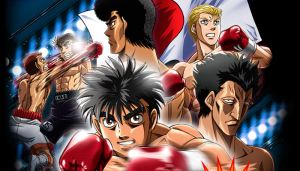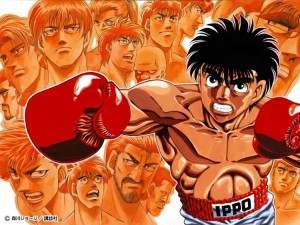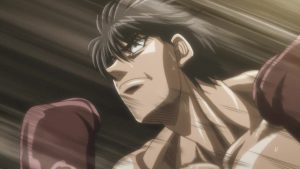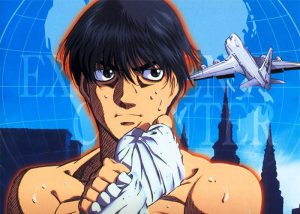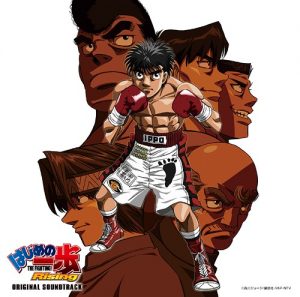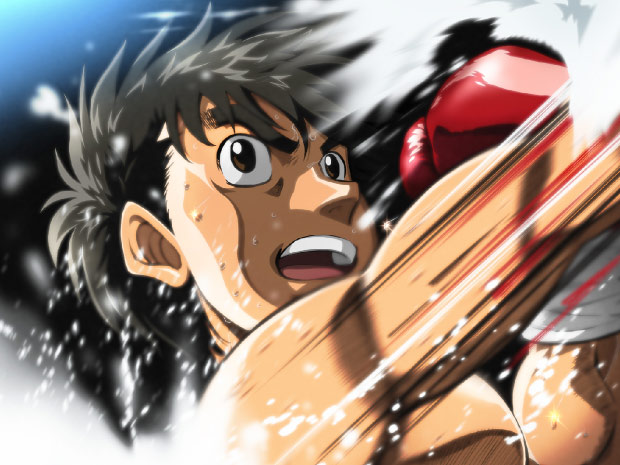
Hajime no Ippo’s influence in the anime industry cannot be overstated. If you’re into Kuroko no Basuke, Haikyuu, Yuri on Ice, Prince of Tennis, or really any other sports battle anime, then you need to thank Hajime no Ippo. It’s the series that created the basic plot structure that basically every sports anime follows. Captain Tsubasa precedes it, but it was more of a prototype for the formula before Hajime no Ippo nailed it down. Technically, Slam Dunk’s anime came first, but Ippo’s manga came a full year beforehand. Hajime no Ippo is the one most related
with the formula.
So, with sports anime being such a hot trend right now, we felt it important to recognize its influence and cover the very rough story beats and tropes Ippo helped create.
The Inspirational Figure
You know the drill. A down-on-his-luck every-boy with no prospects for his future is inspired to shoot for the big time by an incredible player who seems larger than life. Like Little Giant of Haikyuu. Like Victor of Yuri on Ice. Like Eyeshield 21 of, er, Eyeshield 21. These are the characters that the hero is always chasing after and gives them drive to keep moving forward.
What’s interesting about this trope is that while later series would give these characters an almost mythical-like quality to their presence, Takamura from Hajime no Ippo has a vastly more direct influence on Ippo. Takamura is always around the gym, going on his own separate journey, separate from Ippo. Yet, also interestingly, these two characters have absolutely no chance of ever encountering each other in the ring due to their massive weight difference. Later stories would directly connect the underdog hero and their idol’s eventual showdown, but in Hajime no Ippo, it can literally never happen, further solidifying just how unobtainable Ippo’s dreams truly are.
The Hot-Blooded Rival
This is the character who always runs counter to our hero. Generally, they tend to already be well-acquainted with the sport in question and have developed a bit of a complex over themselves due to being billed as a prodigy by their peers. Our hero, generally an outsider to the game, challenges their prospective rival to a match and turns their world upside down. This is because our hero, due to being so new to the sport, is able to look at it from a different light and completely change how the game is played.
Ippo has a bit of a strange history with this. The character in Ippo that best represents this is Miyata, who attempts to honor his father’s legacy as a counter-fighter and his belief in his ability is thrown into question when Ippo, a complete newcomer, is able to fight directly with Miyata due to his sheer tenacity. Yet, in later sports series, the big rival rematch is treated as a massive event the series has been building up to. In Hajime no Ippo, that rematch with Miyata never actually happens. Much like with Takamura, it’s almost as if later authors were looking to address the built up tension they felt waiting for that match that never came.
The Special Move
Every good hero has it. This is the technique the hero masters after tons of practice and learning about why they are unique in the game and it becomes their ace-in-the-hole. However, as the series progresses, this killer move develops diminishing returns. It starts out destroying lesser opponents, yet progressively better players figure out how to work around the move and start chipping away until their once-thought greatest strength turns once again into a weakness. Eventually, this forces them to evolve their move beyond what was even thought possible.
This is actually a progression that Hajime no Ippo has down in spades. The greatest climax of the series—the championship bout against Sendo—is defined by the debut of Ippo’s Dempsey Roll, marking it as an all-time memorable moment in the story. As Ippo begins to defend his title, he’s met with new ways in which he needs to confront the main weakness of the technique, beginning with getting over mental barriers and ending with the mechanics of the Dempsey Roll getting shattered by Sawamura. It’s a satisfying progression that’s necessary to keep the viewer/reader engaged, always calling into question when the move will inevitably fail.
Final Thoughts
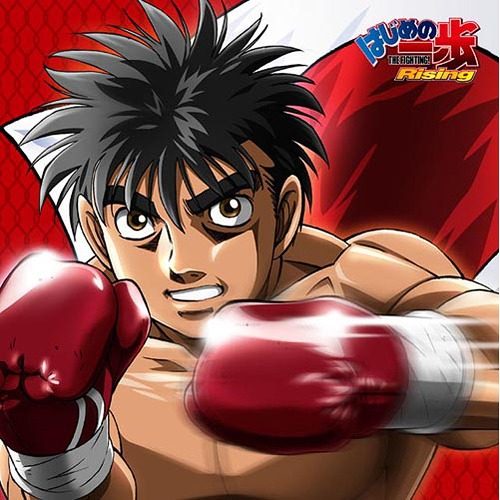
There’s a lot more we could go into with how Hajime no Ippo influenced sports anime, but these are the very basics that are also the most notable. It’s important to note that just because these are now tropes, other series that implement them shouldn’t be viewed as lesser to Hajime no Ippo: they clearly continue to work for a reason. But Ippo is the one that popularized them.
What did we leave out? Did you notice more similarities with your favorite series from the ones we listed? Let us know in the comments below!
Recommended Post
[Throwback Thursday] Top 10 Strongest Hajime no Ippo Characters
Recommended Post
[Throwback Thursday] Top 10 Hajime no Ippo Fight Scenes
Recommended Post
The Sport of Boxing as Seen in Hajime no Ippo
Recommended Post
6 Manga Like Hajime no Ippo [Recommendations]
Recommended Post
[Honey’s Crush Wednesday] Miyata Ichiro from Hajime no Ippo
Recommended Post


